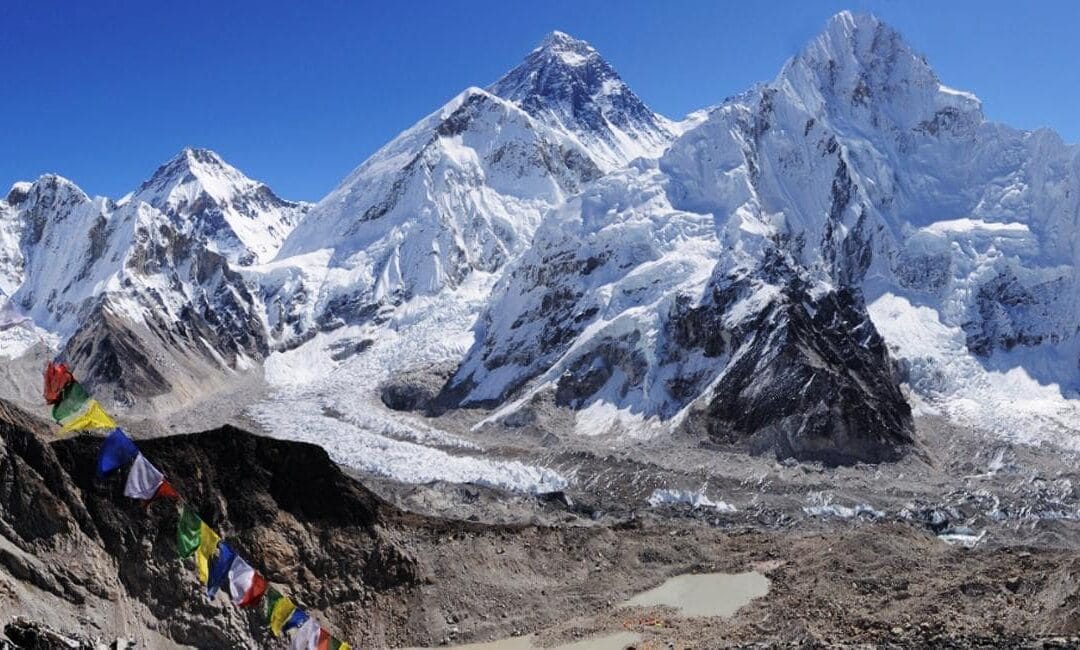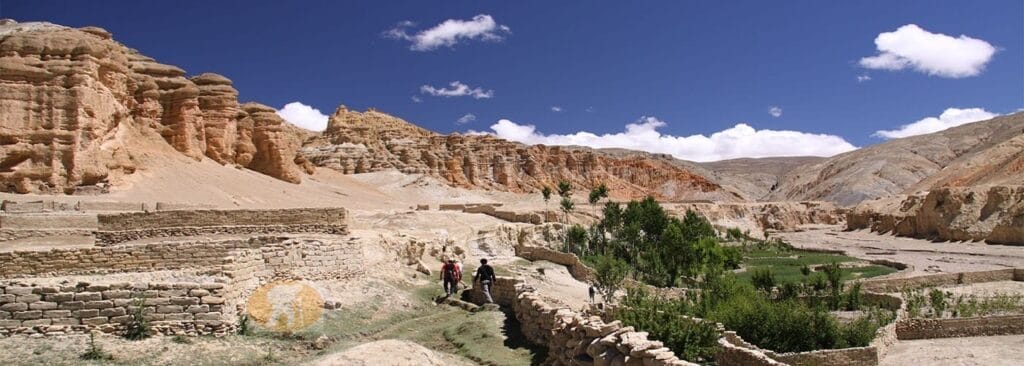Nepal has breathtaking landscapes, ancient cultures, and unforgettable adventures. If you’re passionate about experiencing the transformative beauty of trekking in Nepal, then this guide is your gateway to exploring the best of Nepal trekking tours and trekking routes. Whether you dream of conquering the challenging Everest Base Camp trek or prefer the cultural and scenic wonders of the Annapurna Circuit trek, Nepal offers an array of experiences that cater to all adventurers. This comprehensive guide delves into the rich history, practical details, and modern experiences of trekking in Nepal. We also provide essential tips on trekking permits, gear lists, and choosing the proper trekking agencies, ensuring you’re fully prepared for your Himalayan journey.
I. Introduction
Nepal beckons adventurers from around the globe with its vibrant mix of rugged mountains, serene valleys, and vibrant cultures. Trekking in Nepal is more than just a physical challenge—it’s an experience that transforms your mindset, enriches your understanding of diverse cultures, and connects you with nature in its purest form. In this guide, we explore various Nepal trekking tours and detail iconic routes such as the Everest Base Camp trek, Annapurna Circuit trek, Langtang Valley trek, Manaslu Circuit trek, Ghorepani Poon Hill trek, and Mardi Himal trek. We will also cover lesser-known yet exceptional treks like the Upper Mustang and Kanchenjunga trek. You’ll also find actionable insights on obtaining Nepal trekking permits, knowing the best time to trek in Nepal, and preparing a comprehensive trekking gear list. Our discussion extends to understanding how to choose reputable Nepal trekking agencies and even acquire Nepal trekking insurance to safeguard your adventure.
This article is your ultimate resource, packed with detailed route guides, cultural context, practical tips, statistics, quotes, testimonials, and success stories from trekkers who’ve experienced Nepal’s diverse trekking landscape. Whether you are a seasoned trekker or a novice planning your first adventure, our guide will equip you with everything you need to conquer the trails of Nepal.
II. Historical and Cultural Background
A. The Evolution of Trekking in Nepal
Nepal’s rich history as a crossroads of ancient trade routes and pilgrimage paths set the stage for modern trekking. Long before the advent of organized tourism, people traversed these rugged trails to visit sacred shrines and trade goods. Over time, these trails were rediscovered by international adventurers, and trekking in Nepal evolved from a local tradition into a global phenomenon. Today, trekking in Nepal is celebrated worldwide for its blend of natural beauty, cultural heritage, and physical challenge.
B. Cultural Significance
Nepal’s festivals, rituals, and daily life are intertwined with the rhythm of the mountains and valleys. Trekkers witness the vibrant traditions of local communities, from the lively festivals of the Kathmandu Valley to the ancient customs preserved in remote villages. The cultural richness of Nepal trekking tours is evident in the warm hospitality of residents, who invite trekkers to share in their meals, rituals, and celebrations. This unique cultural exchange profoundly impacts visitors, offering insights into the resilience and spirit of Nepalese society.
C. Socioeconomic Impact
Trekking in Nepal significantly contributes to the national economy. Tourism revenue from trekking not only supports local businesses but also leads to infrastructure development in remote areas. According to recent data, trekking tourism accounts for a substantial percentage of Nepal’s GDP, with regions hosting trekking routes experiencing improved living standards and increased access to services. These positive changes have made trekking an essential pillar of Nepal’s community development and sustainable tourism.
III. Overview of Nepal’s Trekking Landscape
A. Geography and Natural Beauty
Nepal boasts an extraordinary landscape—from the mighty peaks of the Himalayas to lush, rolling valleys and terraced farmlands. The diverse topography makes trekking in Nepal a multifaceted experience, catering to thrill-seekers and those who appreciate serene natural beauty. Every trekking tour offers a new perspective on nature’s grandeur, with panoramic views, pristine forests, and sparkling rivers.
B. Tourism and Economic Impact
The trekking industry in Nepal not only fuels local economies but also acts as a conduit for cultural exchange. International tourists bring in revenue that supports local artisans, guides, and hospitality providers. As global interest in Nepal trekking tours continues to grow, infrastructure and community development investments increase, enhancing the overall trekking experience while boosting local development.
C. Types of Trekking Experiences
Nepal offers a variety of trekking experiences, each with its unique appeal:
- Cultural Treks: These combine scenic beauty with rich cultural exposure, providing encounters with local traditions, festivals, and daily life.
- Adventure Treks: Designed for those seeking physical challenges, these routes include high-altitude treks and rugged landscapes.
- Spiritual Treks: Often linked with pilgrimage, these treks take you to ancient temples, monasteries, and sacred sites.
IV. In-Depth Analysis of Popular Trekking Routes
Below, we explore Nepal’s most famous trekking routes, including detailed information on how to trek each route, key techniques, essential gear, and unique cultural experiences.
A. Everest Base Camp Trek
History & Development
The Everest Base Camp trek is perhaps Nepal’s most iconic trekking route. Historically, these trails were used by Sherpa communities and pilgrims long before international trekkers began exploring the region. Today, it stands as a symbol of human endurance and adventure.
How to Trek
- Basic Rules:
Stay on designated trails, manage your pace for proper acclimatization, and follow local guidelines. - Techniques:
Focus on gradual ascents, maintaining a steady pace, and staying hydrated. Work with experienced guides to ensure safety. - Essential Gear:
Trekking boots, layered clothing, poles, altimeter, and a comprehensive Nepal trekking gear list. - Local Tips:
Respect local customs, interact with Sherpas, and absorb the history along the trail.
Current Scene and Impact
The Everest Base Camp trek drives significant tourism revenue and offers a transformative personal experience. It boosts local economies and fosters cultural exchange, drawing thousands of trekkers annually. However, challenges include environmental concerns and over-tourism in some areas.
Future Outlook
With ongoing improvements in Nepal’s trekking infrastructure and eco-friendly initiatives, the future of the Everest Base Camp trek looks promising, with a focus on sustainable tourism.
B. Annapurna Circuit Trek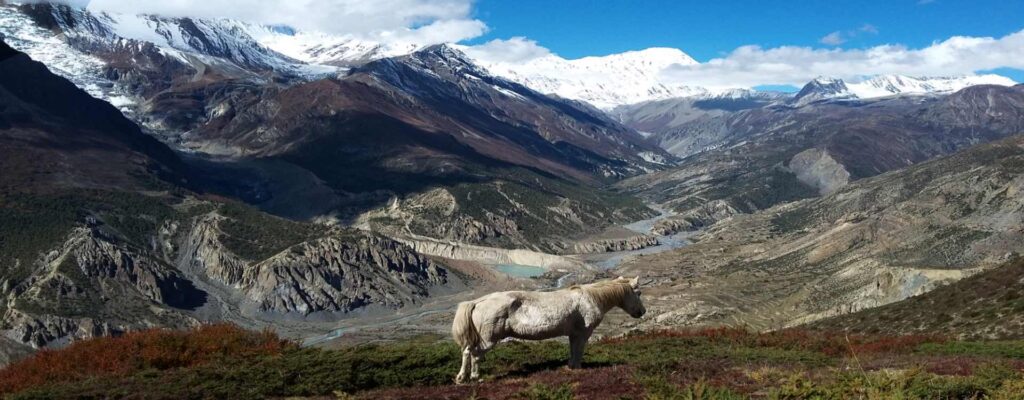
History & Cultural Significance
The Annapurna Circuit trek is celebrated for its diverse landscapes and rich cultural encounters. Historically an ancient trade route, it now offers trekkers a window into diverse ecosystems and traditions.
How to Trek
- Basic Rules:
Follow the established itinerary, stay vigilant for altitude changes, and respect local villages. - Techniques:
Emphasize gradual acclimatization, use trekking poles for balance, and monitor weather changes closely. - Essential Gear:
Warm clothing, rain gear, quality boots, and a comprehensive Nepal trekking gear list. - Local Insights:
Interact with local communities to learn about regional customs and traditions.
Current Scene and Impact
Annapurna Circuit remains one of the most popular Nepal trekking tours, drawing thousands of trekkers each year. The trek improves physical fitness and contributes to local livelihoods through tourism revenue and small business growth.
Future Outlook
Despite challenges like trail congestion, the Annapurna Circuit trek is evolving with sustainable practices and improved management of Nepal trekking permits and infrastructure, ensuring long-term viability.
C. Langtang Valley Trek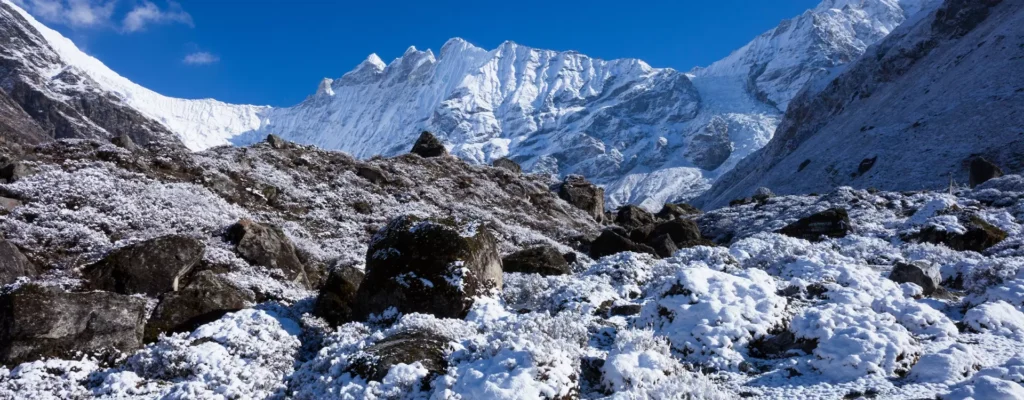
Historical Overview
The Langtang Valley trek has a resilient history, overcoming natural disasters and growing steadily in popularity. It offers breathtaking vistas and a chance to experience pristine wilderness and authentic local culture.
How to Trek
- Basic Rules:
Adhere to marked trails, maintain proper pace, and follow guidelines for wildlife protection. - Techniques:
Focus on moderate hiking, emphasize good hydration practices, and utilize local expertise for safe navigation. - Essential Gear:
Waterproof hiking boots, layered clothing, and an adequate first-aid kit. - Local Tips:
Engage with local guides for insider knowledge and enrich your cultural experience.
Current Scene and Impact
Langtang Valley is popular among adventurers looking for a more intimate trekking experience. The trek contributes to local tourism and community development, fostering an environment of sustainable travel and ecological preservation.
Future Outlook
With increased investment in Nepal trekking permits and environmental sustainability, the Langtang Valley trek is set to grow, ensuring that natural beauty and cultural heritage are preserved for future generations.
D. Manaslu Circuit Trek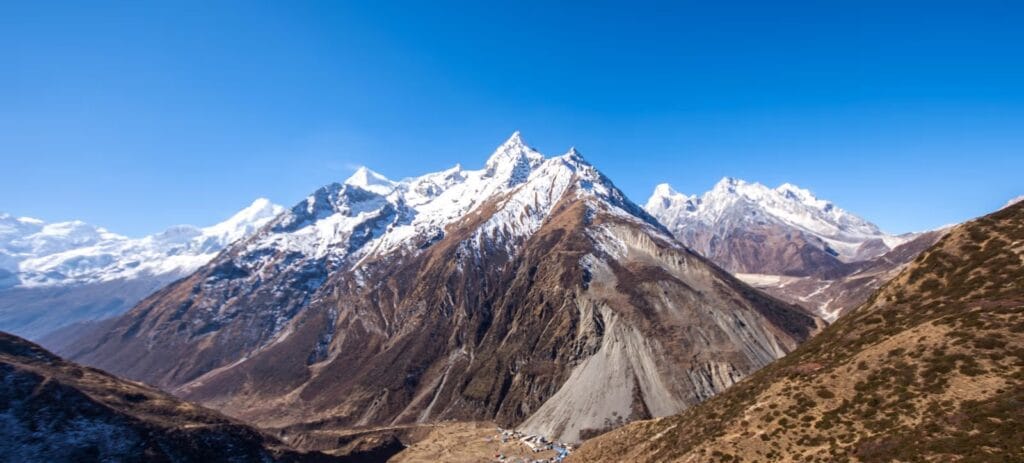
History & Evolution
The Manaslu Circuit trek is among Nepal’s most challenging and rewarding routes. Its history is steeped in ancient traditions and marked by remarkable natural beauty, offering trekkers an immersive experience in remote regions.
How to Trek
- Basic Rules:
Respect altitude acclimatization protocols and adhere to local regulations. - Techniques:
Emphasize careful planning, pace management, and the importance of a robust support system. - Essential Gear:
High-altitude gear, technical clothing, reliable trekking boots, and specialized equipment. - Local Advice:
Follow the detailed Nepal trekking gear list and consult experienced guides for route specifics.
Current Scene and Impact
Manaslu Circuit Trek is gaining popularity among experienced trekkers for its scenic beauty and cultural authenticity. It provides a unique chance to witness traditional lifestyles and rugged natural landscapes while bolstering local economies through tourism.
Future Outlook
Sustainable trekking practices and improved management of Nepal trekking permits are crucial for preserving the pristine environment of the Manaslu region, ensuring its long-term success as a trekking destination.
E. Ghorepani Poon Hill Trek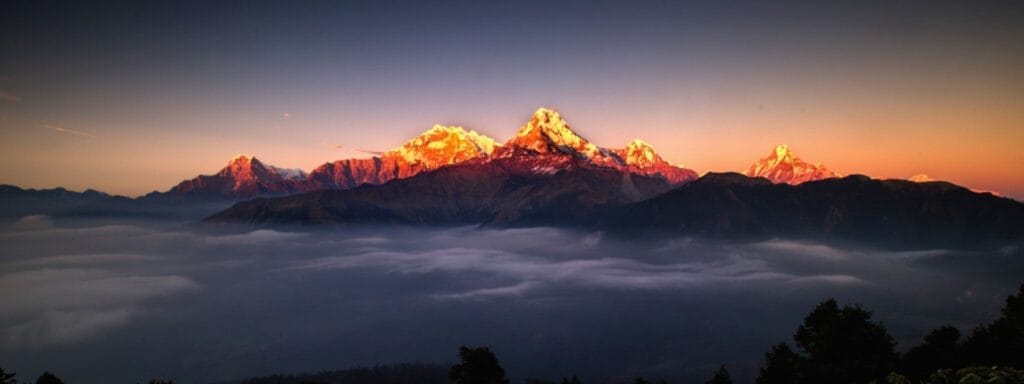
History & Development
The Ghorepani Poon Hill trek is renowned for its accessibility and breathtaking panoramic views. It has become a favorite among novice trekkers and families alike.
How to Trek
- Basic Rules:
Stick to shorter daily distances and enjoy the natural beauty comfortably. - Techniques:
Focus on moderate hiking, particularly enjoying sunrise views from Poon Hill. - Essential Gear:
Lightweight gear, trekking poles, a warm jacket, and a durable backpack. - Local Tips:
Utilize a minimal Nepal trekking gear list to keep your load light and efficient.
Current Scene and Impact
Ghorepani Poon Hill trek is celebrated for offering one of the best views in Nepal, making it a top pick for both international tourists and locals. Its accessibility and scenic vistas contribute to its popularity, fostering community tourism and local economic growth.
Future Outlook
With a focus on seasonal tourism and sustainable practices, the Ghorepani Poon Hill trek continues to attract new visitors, ensuring it remains a beloved destination for breathtaking natural vistas.
F. Mardi Himal Trek

History & Emergence
The Mardi Himal trek has rapidly emerged as an alternative to crowded routes, offering a more secluded and intimate trekking experience in the Annapurna region.
How to Trek
- Basic Rules:
Follow established trails moderately, ensuring proper acclimatization in hilly terrains. - Techniques:
Emphasize endurance training, balance, and efficient navigation. - Essential Gear:
Layered clothing for variable weather, sturdy hiking boots, and essential trekking accessories. - Local Guidance:
Listen to experienced guides and refer to the recommended Nepal trekking gear list for optimal preparation.
Current Scene and Impact
Mardi Himal trek attracts trekkers looking for an off-the-beaten-path experience. Its growing popularity reflects the demand for less congested routes offering scenic beauty and cultural insights. The trek is increasingly recognized for contributing to sustainable tourism and community development.
Future Outlook
As trekking agencies promote new, unique experiences, the Mardi Himal trek is set to become one of the key highlights of Nepal trekking tours, balancing adventure with environmental sustainability.
G. Additional Trekking Routes
Upper Mustang Trek
- Overview:
Explore Upper Mustang, a hidden kingdom with ancient Tibetan culture and majestic desert landscapes. - How to Trek:
Prepare for cultural sensitivity, obtain special permits, and trek through arid, rugged terrain. - Impact:
It offers a unique glimpse into Nepal’s historical past and supports sustainable tourism in remote areas.
Kanchenjunga Trek
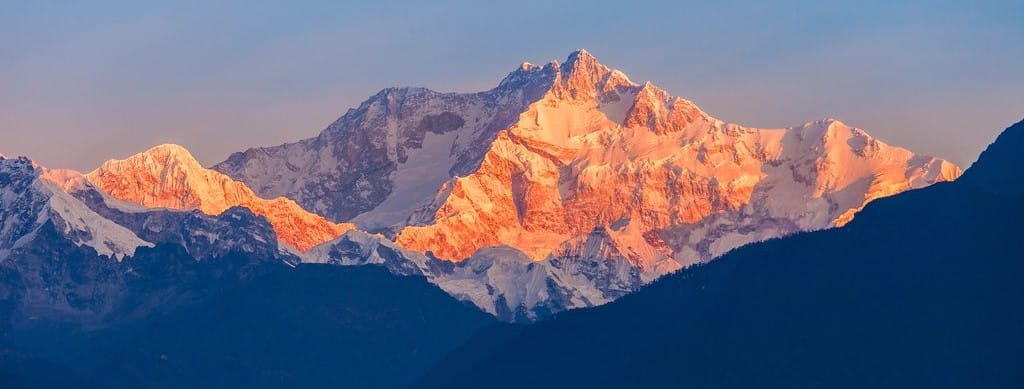
- Overview:
The Kanchenjunga trek is one of the most challenging treks reserved for experienced adventurers. - How to Trek:
Emphasize rigorous physical training, proper acclimatization, and specialized technical gear. - Impact:
Attracts elite trekkers worldwide, boosting high-end tourism and contributing to advanced Nepal trekking tours.
V. Essential Trekking Information
A. Nepal Trekking Permits
The proper permits are crucial for ensuring a safe and regulated trekking experience in Nepal. Trekkers must obtain permits such as the TIMS (Information Management System) card and national park entry fees. These permits help maintain trail safety, preserve the environment, and support local management efforts.
- Steps to Obtain Permits:
- Visit the official Nepal Tourism Board website or local trekking agencies.
- Provide necessary documentation and fees.
- Ensure you adhere to permit rules during your trek.
B. Best Time to Trek in Nepal
The timing of your trek can significantly influence your experience. Nepal offers distinct trekking seasons:
- Spring (March to May):
Mild weather and blooming rhododendrons create ideal conditions for vibrant trekking landscapes. - Autumn (September to November):
Clear skies and pleasant temperatures are perfect for high-altitude treks. - Summer (June to August):
Although monsoon rains can create challenges, lower trails remain accessible.
Know the best time to trek in Nepal based on your destination and personal preferences to ensure a memorable adventure.
C. Nepal Trekking Gear List
Being well-prepared is essential for trekking in Nepal. Here’s a basic Nepal trekking gear list to consider:
- Footwear: Durable trekking boots with proper ankle support.
- Clothing: Layers include moisture-wicking shirts, fleece jackets, and waterproof and windproof layers.
- Accessories: Trekking poles, headlamps, hats, and gloves.
- Safety Items: First-aid kit, multi-tool, and an altimeter or smartwatch.
- Others: Backpack, hydration system, and personal documents (including permits).
D. Nepal Trekking Agencies and Insurance
Choosing a reputable Nepal trekking agency can make all the difference—research agencies with strong safety records, positive reviews, and extensive local knowledge. Additionally, securing Nepal trekking insurance is crucial for covering medical emergencies, trip cancellations, and unexpected events during your trek.
VI. Health, Safety, and Environmental Considerations
A. Physical Preparation and Acclimatization
Prepare physically before the trek through cardiovascular training and strength exercises. Proper acclimatization is essential, particularly on routes that reach high altitudes, like the Everest Base Camp trek.
- Training Tips:
- Regular hiking or running sessions.
- Consistent exercise routines that build endurance.
- Consult with healthcare professionals regarding altitude adjustment.
B. On-Trail Safety Measures
Ensure you are well-informed about safety protocols:
- Follow guided routes, listen to local advice, and always carry emergency contact information.
- Use proper gear and monitor weather conditions closely.
- Know the nearest help points and how to use your Nepal trekking insurance in emergencies.
C. Environmental Sustainability
Practice responsible trekking:
- Adhere to leave-no-trace principles.
- Respect local flora and fauna.
- Participate in eco-friendly initiatives and support sustainable practices throughout your journey.
VII. Economic, Social, and Cultural Impact of Trekking in Nepal
A. Economic Contributions
Trekking is a significant economic driver in Nepal. It supports local communities by creating jobs, boosting tourism, and fostering ancillary industries like transportation, hospitality, and artisanal crafts. According to recent tourism reports, trekking tourism contributes significantly to the GDP, stimulating rural and urban economies.
B. Social Benefits
Trekking in Nepal plays a vital role in building community ties:
- Community Cohesion:
Local villagers actively participate in trekking tourism, providing homestays and guiding services. This engagement fosters community pride and social unity. - Youth Empowerment:
Trekking initiatives offer youth opportunities to learn new skills, participate in cultural exchanges, and gain exposure to global experiences. - Cultural Preservation:
Trekking routes often traverse areas rich in tradition, where festivals, rituals, and local customs are preserved and celebrated.
C. Cultural Impact
The exchange of culture is at the heart of Nepal trekking tours:
- International trekkers learn about local customs and traditions.
- Local communities benefit from heightened global awareness of their cultural heritage.
- Events along trekking routes, such as local festivals and market days, enhance cultural experiences and promote traditional arts.
VIII. Challenges and Opportunities in Nepali Trekking
A. Infrastructure and Funding
Despite its popularity, Nepal’s trekking infrastructure often faces challenges such as outdated facilities, limited resources, and funding constraints. Investment in Nepal’s trekking infrastructure is crucial to supporting growing tourist numbers and ensuring safety.
- Opportunities for Improvement:
Collaborations between government, NGOs, and international partners can upgrade trails, improve communication, and enhance safety measures.
B. Environmental Pressures
High trekking traffic can lead to environmental degradation. Issues such as waste management and ecological disturbances are critical challenges.
- Sustainable Practices:
Initiatives to enforce leave-no-trace principles, recycling programs, and regulated trekking permits help mitigate environmental damage.
C. Accessibility and Local Benefit
Ensuring that trekking benefits local communities is an ongoing challenge.
- Community Involvement:
Trekking tourism can lead to sustainable economic development and improved living standards by engaging local guides, homestays, and community projects. - Opportunities:
Expanding training and certification for local trekking agencies can further empower communities and ensure lasting benefits.
IX. Future Outlook for Trekking in Nepal
A. Emerging Trends and Predictions
The future of trekking in Nepal is bright, with emerging trends signaling more sustainable and inclusive practices:
- Technological Integration:
Digital tools for navigation, social media marketing, and online booking systems are revolutionizing the trekking experience. - Growing International Interest:
Nepal trekking tours continue to see an increase in international visitors, driven by global travel trends and the allure of high-altitude adventures. - Youth-Driven Initiatives:
More young people are getting involved in trekking as participants and as part of grassroots development initiatives, ensuring the continuous evolution of trekking culture.
B. Strategies for Sustainable Growth
To secure a prosperous future for trekking in Nepal, several strategies must be prioritized:
- Infrastructure Investment:
Continued funding and development of trails, rest houses, and emergency facilities. - Environmental Stewardship:
Implementing strict regulations to minimize the ecological footprint of trekking activities. - Community Empowerment:
Encouraging local participation in trekking tourism to ensure economic benefits directly support community development. - Global Partnerships:
Collaborating with international trekking agencies, research organizations, and cultural institutions to enhance standards and share best practices.
C. Role of Government and NGOs
Government policies and NGO initiatives play a pivotal role in shaping the trekking landscape:
- Regulatory Framework:
Ensuring that trekking permits are efficiently managed and that safety standards are rigorously maintained. - Community Programs:
Supporting local training, education, and capacity-building programs empowers communities and improves local tourism infrastructure.
X. Success Stories and Testimonials
A. International Trekkers’ Experiences
Ava (Canada):
“I embarked on the Everest Base Camp trek and was overwhelmed by the beauty and resilience of the Nepali people. Trekking in Nepal transformed my perspective on life and adventure. Every step on the trail was a learning experience, and the hospitality I received was heartwarming.”
Jonas (Germany):
“The Annapurna Circuit trek was a journey of a lifetime. I learned more about myself and the world than I ever imagined. The rich cultural interactions and stunning landscapes made trekking in Nepal an unforgettable experience.”
Sophia (Australia):
“I completed the Langtang Valley trek and was struck by the balance of nature and culture. Nepal trekking tours allowed me to connect deeply with local communities, experience breathtaking views, and push my physical limits in the best possible way.”
B. Local Community Insights
Ms. Bhandari (Village Leader):
“Trekking has revitalized our community. The influx of trekkers has created new opportunities for local businesses and enhanced our cultural pride. We now have better infrastructure and a heightened sense of global connection.”
Ramesh (Local Guide):
“Our trails are no longer just pathways—they are bridges between tradition and modernity. Trekking in Nepal has provided steady income for locals, increased educational opportunities, and raised awareness about our rich cultural heritage.”
Anil (Community Organizer):
“The positive impact of trekking extends far beyond tourism. It has empowered our youth, improved local facilities, and sparked a renewed interest in preserving our traditions. The growth of Nepal trekking tours has set the stage for long-term community development.”
C. Measurable Outcomes
- Economic Growth:
Data shows that trekking tourism has boosted local economies by up to 25% in key regions, creating jobs and supporting small enterprises. - Community Development:
Sustainable trekking practices have improved infrastructure, including upgraded trails, better trekking lodges, and enhanced public amenities. - Social Impact:
Increased interaction between international trekkers and local communities has led to cross-cultural exchange, new educational initiatives, and strengthened community ties.
XI. Practical Tips for Prospective Trekkers
A. Preparation and Physical Training
- Fitness Regimen:
Begin a training program several months before your trek. Cardiovascular exercise, strength training, and hiking practice are essential to prepare your body for the physical demands of trekking in Nepal. - Acclimatization:
Learn how to acclimatize to high altitudes properly. Gradual ascent and listening to your body’s signals are key to avoiding altitude sickness.
B. Planning Your Itinerary
- Best Time to Trek in Nepal:
Research seasonal weather patterns. The best time to trek in Nepal is generally spring (March to May) and autumn (September to November), when the conditions are most favorable. - Choosing a Route:
Decide between classic treks like the Everest Base Camp trek, Annapurna Circuit trek, Langtang Valley trek, Manaslu Circuit trek, Ghorepani Poon Hill trek, and Mardi Himal trek based on your experience and interests. - Utilizing Trekking Agencies:
Consider partnering with reputable Nepal trekking agencies for logistical support, guided tours, and safety assurance.
C. Essential Gear and Packing Tips
- Nepal Trekking Gear List:
Develop a checklist of essential items, including sturdy boots, layered clothing, a backpack, trekking poles, a sleeping bag, and weather-appropriate gear. - Packing Efficiently:
Pack light but include necessary items to manage variable weather conditions. Ensure you have documents such as passports, visas, and Nepal trekking permits.
D. Safety, Insurance, and On-Trail Support
- Nepal Trekking Insurance:
Secure comprehensive travel insurance that covers medical emergencies, trip cancellations, and high-altitude trekking risks. - Health Precautions:
Stay up-to-date with vaccinations and consult healthcare providers before embarking on your trek. - On-Trail Support:
Utilize local guides, carriers, and established trekking lodges to ensure you have access to support throughout your journey.
XII. Environmental and Cultural Considerations
A. Respecting Nature
- Leave No Trace:
Adhere to sustainable practices to minimize your environmental impact. Dispose of waste properly and respect wildlife and natural habitats. - Supporting Local Conservation Efforts:
Contribute to initiatives aimed at preserving the pristine landscapes of Nepal. Environmental community volunteer projects and eco-friendly trekking practices are essential.
B. Cultural Sensitivity
- Engaging with Local Communities:
Approach every interaction with respect and openness. Learn basic local phrases and cultural norms to foster mutual understanding. - Participatory Tourism:
Support community-led tourism initiatives that benefit local populations. Engage in responsible trekking that leaves a positive legacy.
XIII. Success Stories and Testimonials
A. International Trekker Experiences
Ava (Canada):
“Trekking in Nepal was a life-altering journey. Every Everest Base Camp trek step brought me closer to nature and local communities. The camaraderie and shared experiences made it unforgettable. I highly recommend Nepal trekking tours to anyone seeking adventure and personal growth.”
Jonas (Germany):
“I completed the Annapurna Circuit trek and discovered a world of breathtaking landscapes and warm hospitality. The insights I gained during trekking in Nepal have enriched my life and inspired me to pursue further adventure. Working with local guides and trekking agencies was a seamless and enriching experience.”
Sophia (Australia):
“From the Langtang Valley trek to the challenging Manaslu Circuit trek, my journeys through Nepal were filled with awe-inspiring moments and life lessons. I returned home with enhanced resilience and a deeper appreciation for the beauty and diversity of Nepal. The experience was transformative, both physically and mentally.”
B. Local Community Insights
Ms. Bhandari (Local Community Leader):
“Trekking tourism has revolutionized our community. The influx of trekkers has improved local infrastructure and boosted our economy. Thanks to responsible trekking practices, our traditions and natural beauty are now celebrated globally.”
Ramesh (Local Guide):
“As a guide, I’ve witnessed firsthand how trekking in Nepal brings people together. Trekkers explore our stunning landscapes, learn about our heritage, and support our community initiatives. This partnership has made a lasting impact on our youth and local businesses.”
Anil (Community Organizer):
“Trekking in Nepal has provided a steady flow of international visitors, which has boosted our local markets and created job opportunities. The positive interactions between travelers and locals have enriched our community economically and culturally.”
C. Measurable Outcomes
- Economic Benefits:
Recent studies have shown that trekking tourism boosts local economies by up to 25% in key trekking regions, creating sustainable jobs and supporting local enterprises. - Infrastructure Development:
Areas frequented by trekking tours have seen significant improvements in road networks, transportation, and public facilities. - Cultural Exchange:
Interaction between international trekkers and local communities has enhanced cultural preservation and created new educational opportunities for villagers.
XIV. Final Thoughts
Trekking in Nepal is not just an adventure—it’s a journey that touches every aspect of life. The diverse trails, from the iconic Everest Base Camp trek to the scenic Annapurna Circuit trek, from the serene Langtang Valley trek to the challenging Manaslu Circuit trek, showcase Nepal’s natural splendor and the resilience of its people. Each trek reveals a unique story, a blend of ancient traditions and modern challenges, and a shared commitment to sustainable tourism.
Nepal trekking tours allow you to explore the world’s highest peaks, immerse yourself in local cultures, and return home with memories and experiences that last a lifetime. With comprehensive support through reputable Nepal trekking agencies, a detailed Nepal trekking gear list, and essential tools like Nepal trekking permits and insurance, your journey is well-prepared for success.
Every mile trekked in Nepal contributes to the broader tapestry of community development, environmental stewardship, and cultural preservation. These trails challenge your physical limits and inspire personal transformation and global understanding. The mountains of Nepal have witnessed countless stories of triumph, struggle, and beauty—and now, they are ready to share these stories with you.
XV. Embark on Your Nepali Trekking Adventure Today!
Are you ready to challenge your limits, explore breathtaking landscapes, and be part of a transformative journey? Join our trekkers community and experience the unparalleled adventure trekking in Nepal has to offer. Whether you’re drawn to the majestic Everest Base Camp trek or the culturally rich Annapurna Circuit trek, your next great adventure awaits.
Take the first step by planning your trip, consulting a reputable Nepal trekking agency, and preparing your gear. Embrace the journey with the proper preparation—including a comprehensive Nepal trekking gear list and necessary permits—and immerse yourself in the heart of the Himalayas.
For further details, feel free to reach out via:
- Email: support@vin.org.np
- WhatsApp: +977 9851070477
🏔️ Top 10 Must-Know Facts About Trekking in Nepal
| . | 🌟 Fact | 📌 Description |
|---|---|---|
| 🏞️ | Trekking = Transformation | Trekking in Nepal is more than adventure—it’s a life-changing journey through nature, culture, and self-discovery. |
| 🧭 | Over 20 Iconic Routes | Nepal offers diverse treks—from the Everest Base Camp to Upper Mustang—suiting all levels, from beginners to pros. |
| 📆 | Best Seasons: Spring & Autumn | March–May and September–November offer the clearest skies and most comfortable weather for trekking. |
| 🛂 | Permits Are Mandatory | Trekkers need TIMS cards and conservation area permits—easily arranged through agencies or tourism offices. |
| 🎒 | Gear Up Wisely | A solid Nepal trekking gear list includes layers, boots, poles, a first-aid kit, and hydration essentials—pack smart! |
| 🧑🤝🧑 | Local Guides = Safer Treks | Reputable Nepal trekking agencies and experienced local guides boost safety, enrich cultural insights, and support communities. |
| 💰 | Trekking Powers the Economy | Trekking tourism contributes significantly to Nepal’s GDP, uplifting rural economies and creating local jobs. |
| 🏘️ | Community Impact is Real | Homestays, tea houses, and porter jobs ensure that trekking directly benefits mountain communities. |
| 🌍 | Eco-Conscious Trekking Grows | Sustainable trekking is on the rise: Leave No Trace, proper waste disposal, and cultural respect are now priorities. |
| 🧘 | Mind-Body-Soul Connection | Trekking in Nepal isn’t just physical—it boosts mental clarity, emotional balance, and spiritual well-being. |

